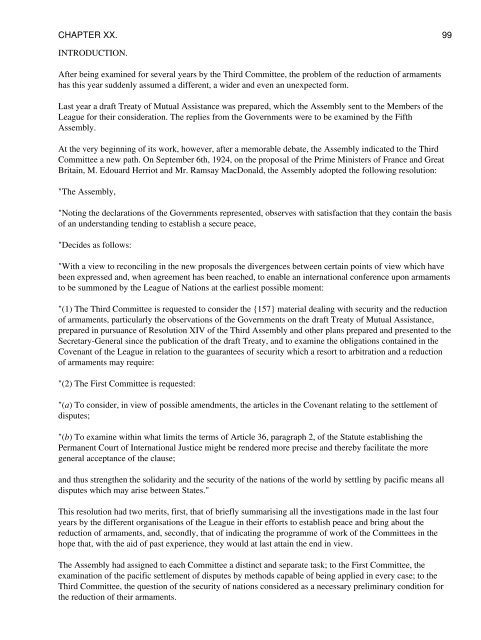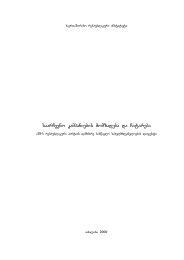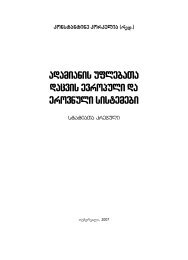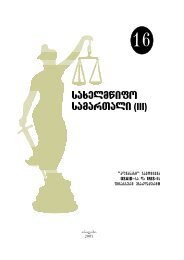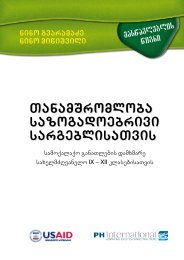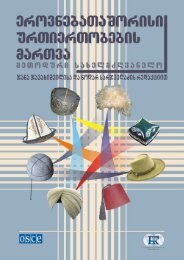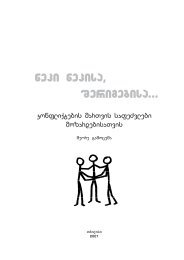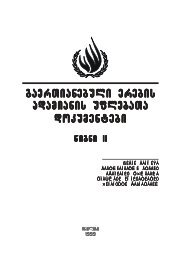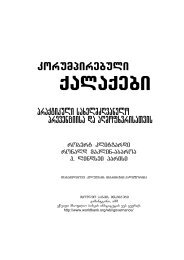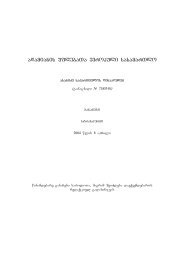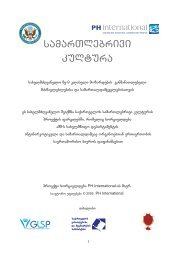The Geneva Protocol, by David Hunter Miller
The Geneva Protocol, by David Hunter Miller
The Geneva Protocol, by David Hunter Miller
Create successful ePaper yourself
Turn your PDF publications into a flip-book with our unique Google optimized e-Paper software.
CHAPTER XX. 99<br />
INTRODUCTION.<br />
After being examined for several years <strong>by</strong> the Third Committee, the problem of the reduction of armaments<br />
has this year suddenly assumed a different, a wider and even an unexpected form.<br />
Last year a draft Treaty of Mutual Assistance was prepared, which the Assembly sent to the Members of the<br />
League for their consideration. <strong>The</strong> replies from the Governments were to be examined <strong>by</strong> the Fifth<br />
Assembly.<br />
At the very beginning of its work, however, after a memorable debate, the Assembly indicated to the Third<br />
Committee a new path. On September 6th, 1924, on the proposal of the Prime Ministers of France and Great<br />
Britain, M. Edouard Herriot and Mr. Ramsay MacDonald, the Assembly adopted the following resolution:<br />
"<strong>The</strong> Assembly,<br />
"Noting the declarations of the Governments represented, observes with satisfaction that they contain the basis<br />
of an understanding tending to establish a secure peace,<br />
"Decides as follows:<br />
"With a view to reconciling in the new proposals the divergences between certain points of view which have<br />
been expressed and, when agreement has been reached, to enable an international conference upon armaments<br />
to be summoned <strong>by</strong> the League of Nations at the earliest possible moment:<br />
"(1) <strong>The</strong> Third Committee is requested to consider the {157} material dealing with security and the reduction<br />
of armaments, particularly the observations of the Governments on the draft Treaty of Mutual Assistance,<br />
prepared in pursuance of Resolution XIV of the Third Assembly and other plans prepared and presented to the<br />
Secretary-General since the publication of the draft Treaty, and to examine the obligations contained in the<br />
Covenant of the League in relation to the guarantees of security which a resort to arbitration and a reduction<br />
of armaments may require:<br />
"(2) <strong>The</strong> First Committee is requested:<br />
"(a) To consider, in view of possible amendments, the articles in the Covenant relating to the settlement of<br />
disputes;<br />
"(b) To examine within what limits the terms of Article 36, paragraph 2, of the Statute establishing the<br />
Permanent Court of International Justice might be rendered more precise and there<strong>by</strong> facilitate the more<br />
general acceptance of the clause;<br />
and thus strengthen the solidarity and the security of the nations of the world <strong>by</strong> settling <strong>by</strong> pacific means all<br />
disputes which may arise between States."<br />
This resolution had two merits, first, that of briefly summarising all the investigations made in the last four<br />
years <strong>by</strong> the different organisations of the League in their efforts to establish peace and bring about the<br />
reduction of armaments, and, secondly, that of indicating the programme of work of the Committees in the<br />
hope that, with the aid of past experience, they would at last attain the end in view.<br />
<strong>The</strong> Assembly had assigned to each Committee a distinct and separate task; to the First Committee, the<br />
examination of the pacific settlement of disputes <strong>by</strong> methods capable of being applied in every case; to the<br />
Third Committee, the question of the security of nations considered as a necessary preliminary condition for<br />
the reduction of their armaments.


